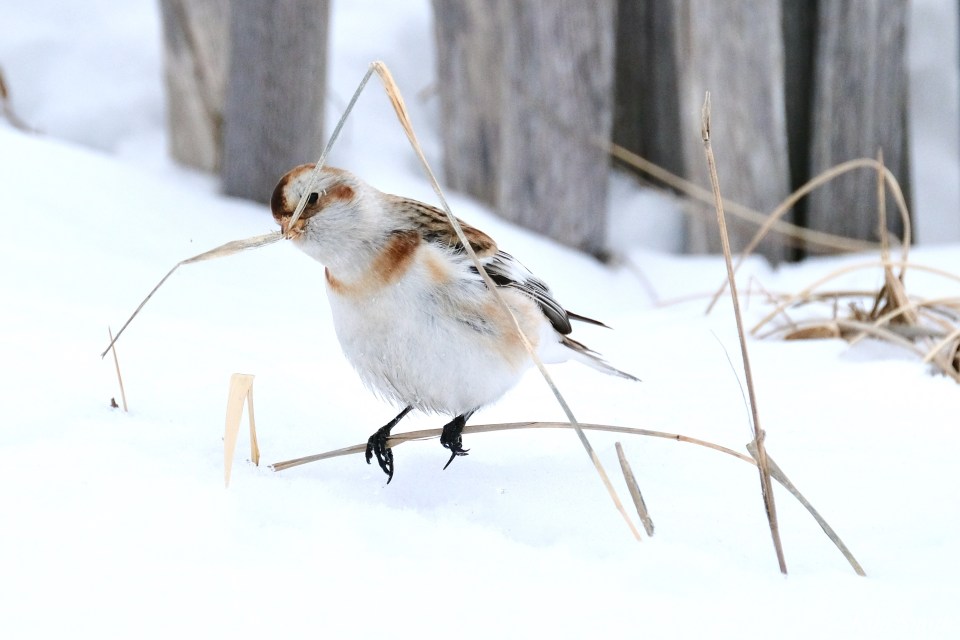 I have so loved filming and photographing Snow Buntings this winter, finding small and medium sized flocks from Sandy Point to Cape Ann, and further south, all along the coast of Massachusetts. The flocks I have been filming are becoming smaller; male Snow Buntings have already begun their long migration north. Don’t you find all migrating species of wildlife fascinating? Especially a tiny creature such as the Snow Bunting, which breeds the furthest north of any known land-based bird. From the shores of Massachusetts Snow Buntings migrate to the high Arctic where they nest in rocky crevices.
I have so loved filming and photographing Snow Buntings this winter, finding small and medium sized flocks from Sandy Point to Cape Ann, and further south, all along the coast of Massachusetts. The flocks I have been filming are becoming smaller; male Snow Buntings have already begun their long migration north. Don’t you find all migrating species of wildlife fascinating? Especially a tiny creature such as the Snow Bunting, which breeds the furthest north of any known land-based bird. From the shores of Massachusetts Snow Buntings migrate to the high Arctic where they nest in rocky crevices.
 The range shown in orange is where Snow Buntings nest
The range shown in orange is where Snow Buntings nest
What has been especially fun to observe is when the Snow Bunting uses its feet as snowshoes and belly like a sled when traversing snow covered beaches. Oftentimes that’s how you can find them, with their unique step-step-slide-tracks. Snow Buntings seem to forage nearly non-stop, perching while shredding grassy seed heads and leaves, and pecking on the ground for seeds caught between sand, stones, and snow. To get from one clump of vegetation to the next, they hop lightly over the surface, snowshoeing along, and then slide along on their bellies. Snow Buntings must gain 30 percent of their body weight before beginning their journey.
Snowshoeing and Sledding
 Lively disagreements over food ensue, usually nothing more than a mild spat.
Lively disagreements over food ensue, usually nothing more than a mild spat.
Males typically depart the northeast for their nesting grounds earlier than do the females, arriving three to six weeks ahead of the females. Snow Buntings migrate entirely at night, following the geomagnetic field of the Earth, independent of any type of visual clue!
Notice in several of the photos you can see their “feathered pantaloons,” providing extra protection against freezing temperatures.
Snow Bunting eggs and nest in rocky crevice, images courtesy Google image search
 Nicknamed Snowflakes because of their ability to nest in snow!
Nicknamed Snowflakes because of their ability to nest in snow!









































Amazing photos. I didn’t know about the hip hop slide!
Thanks so much Pam, what a fun treat to observe <3
Pingback: FLIGHT OF THE SNOW BUNTINGS | Kim Smith Films
Pingback: SNOWBIRD SNOWFLAKES AND WHAT DOES BEACH HABITAT RESTORATION LOOK LIKE IN WINTER TIME? | Kim Smith Films